Photo credit: Adrien Williams
Apple Tree House, a family retreat located in the heart of Quebec’s Lanaudière region. The single-story glass house epitomizes ACDF’s sensitive architectural approach to fostering human connections with nature.
Built on a 250,000 sq. ft. forested plot, the urban family wanted a modern home to enhance their communion with nature, both internally and externally.
The Apple Tree
During the very first explorations of the concept, the architects sought a sensitive approach for drawing nature inside of the house, while the owner embraced vivid childhood memories of growing up in an orchard environment. The apple tree was instantly incorporated into their collective vision, becoming the core of the project.
“The nostalgia of the orchard setting provoked a sincere and pure emotion, and we immediately knew that we had to incorporate an apple tree at the heart of the project in order to sow the seeds of the family's future history,” explains Maxime-Alexis Frappier, partner and co-founder of ACDF.
The integration of the apple tree enabled the host family to enjoy a connection with nature, played out through relationships with various moods of the day, changing seasons, and weather conditions.
Interlinked glass and wood boxes
In order to integrate the apple tree addressed the family’s desire to blur the lines between the interior of the house and its external natural beauty. ACDF focused on transparency and openness architectural concept: a modernist and minimalist glass house.
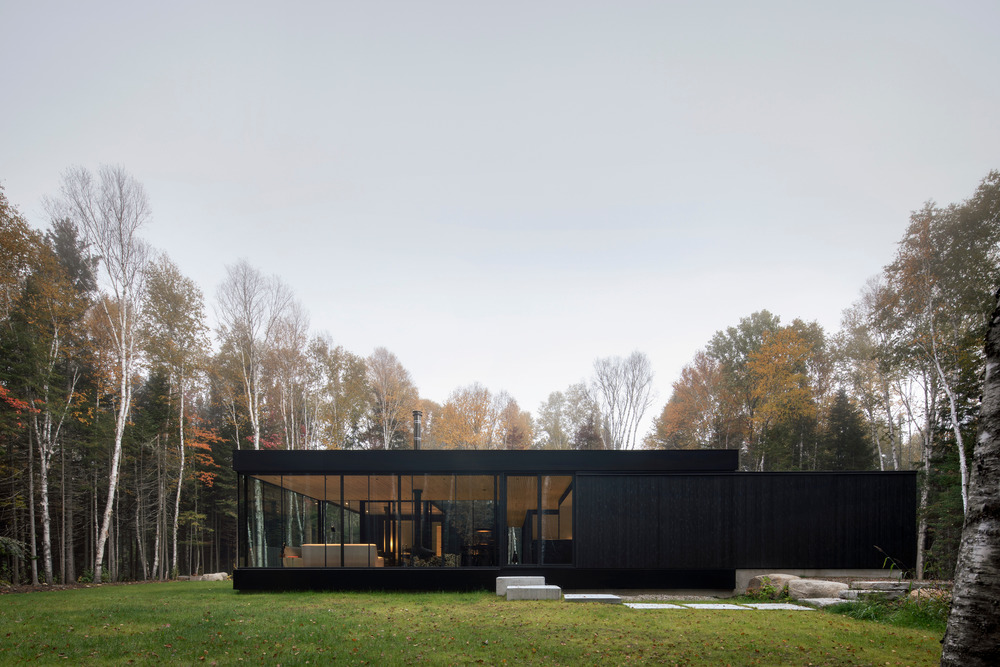

The firm’s design began with a simple placement of two concrete slabs, clad in solid aluminium frames. In the centre, to enable the replanting of the apple tree.
Three individual wooden boxes were then inserted between the horizontal planes. The concept for the boxes was clear and ACDF pushed them in order to precisely accommodate their envisioned functions.
One box houses the garage and servicing area of the home. The second box is dedicated to the bedrooms and bathroom of the client’s children. The third box frames the master suite, comprised of a bedroom, a private lounge, and a bathroom.
Each of the individual boxes offers a cozy, private retreat from the communal ambiance of the home’s main living space.
“The home is designed for connectivity, and glances in every direction provide views across openings to other spaces,” says Frappier.
Seamless connections
Connections with the outdoors are attained through the design and application of multiple layers that transition from the exterior to the interior.

In designing both entrances, it was important that both the garage and the front door would lead to the same experiential entry point inside of the home.
“Positioning and composition is critically important in any process, and no matter where you enter this home,” explains Frappier.
Upon approaching the main entrance, layers of glass provide insight into the internal lobby. Across openings in the central part of the home, a covered porch external views of the forest.
On the internal side of that covered porch, a small, wind-protected open courtyard showcases the family tree.
The covered porch, with its wood stove and comfortable seating, was designed as a gathering space with an indoor/outdoor ambiance.
Open on two sides, the covered porch is equipped with screens on descending rollers. The enclosed porch provides a feeling of being integrated with the home’s interior spaces.
ACDF also aligned the home very carefully to maximize sun patterns, during all seasons. In winter, the presence of abundant sunlight also helps to heat the concrete floors and prevent heat loss.
A window on the world
Careful planning and attention to detail define ACDF’s approach to the internal functionality.
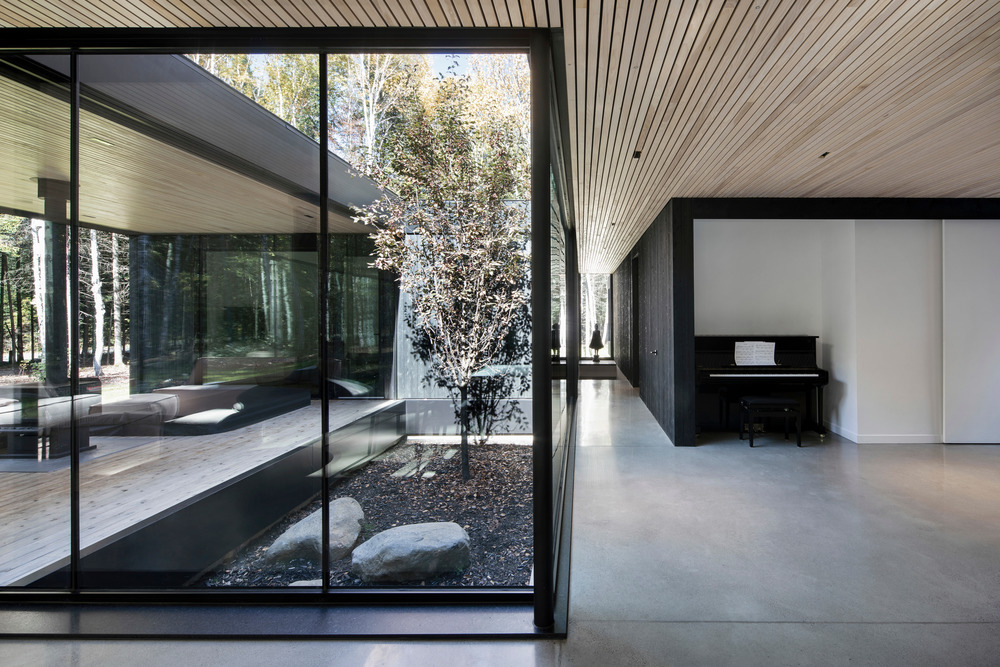
The piano is neatly fitted in a custom-built alcove, strategically placed to enable playing of the piano without imposition on the broader dynamics of the main living area.
Open floorplate of the fully-glazed central living space features a polished concrete floor, with floor-to-ceiling windows providing a powerful and seamless connection with the natural beauty of the exterior.
To counter reverberation ACDF installed wooden planks on the ceiling, with half-inch gaps between them. A black fabric further contributes to capturing reverberation, while ensuring the acoustic harmony of the open space.
The open floorplate comprises a kitchen, a dining area, and a generous living room, illuminated by suspended lamps from Lambert et Fils.

Emotion without extravagance
The expansive space is like a fluid work of art. A fireplace denotes the only decorative intrusion in the smartly, sparsely furnished space. The artwork’s main focal point is the beauty of the great outdoors.


Furnishings were carefully selected for their neutrality, including an Italian-made, solid wood dining table featuring simple lines and black and clear wood finishes that complement the overall design scheme.
Quebec-designed furnishings complete the comfortable seating of the living room, with light grey, pink, and green upholstery tones.
“The beauty of a single tree inspired architecture that is focused on the fulfillment of human emotions,” summarizes Maxime-Alexis Frappier. “The Apple Tree House is a proud example of our ability to establish deep connections with our natural environment, without needless sacrifice on either side of its blurred lines.”

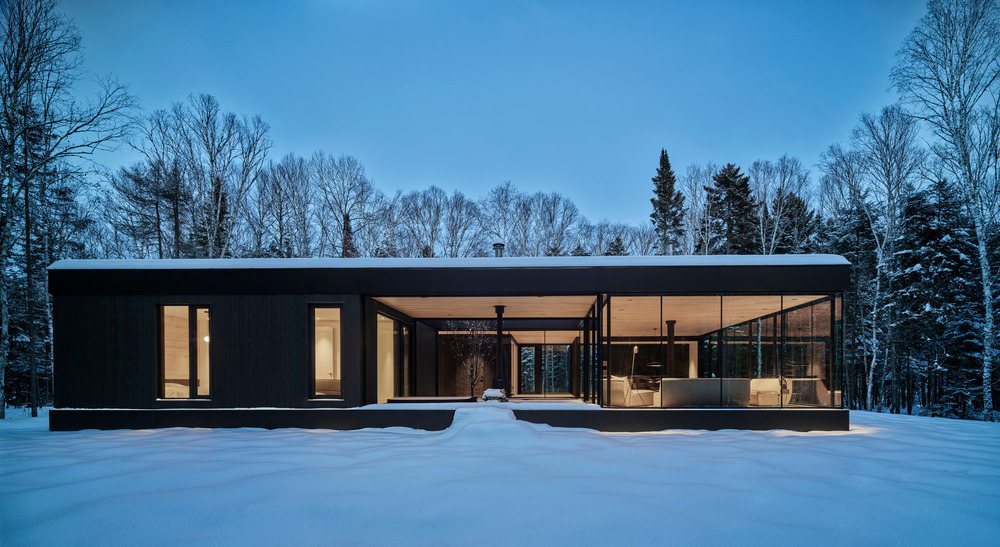
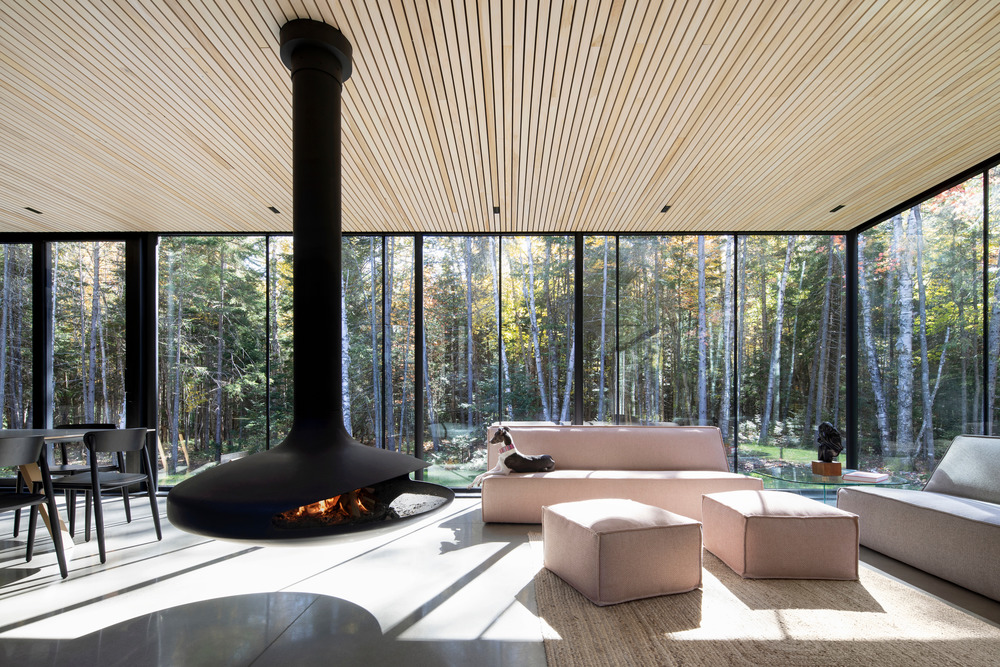

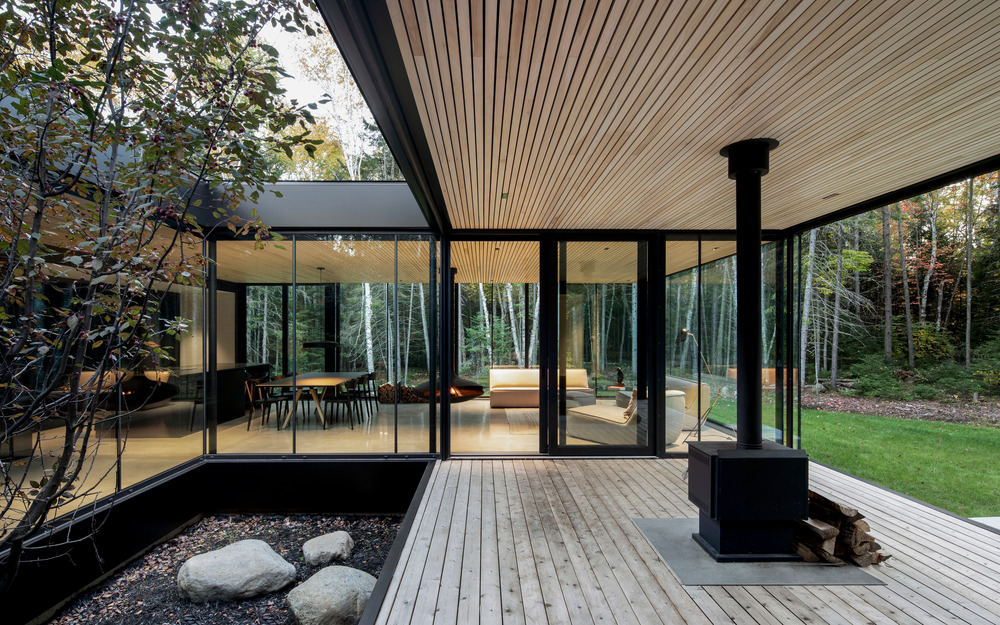


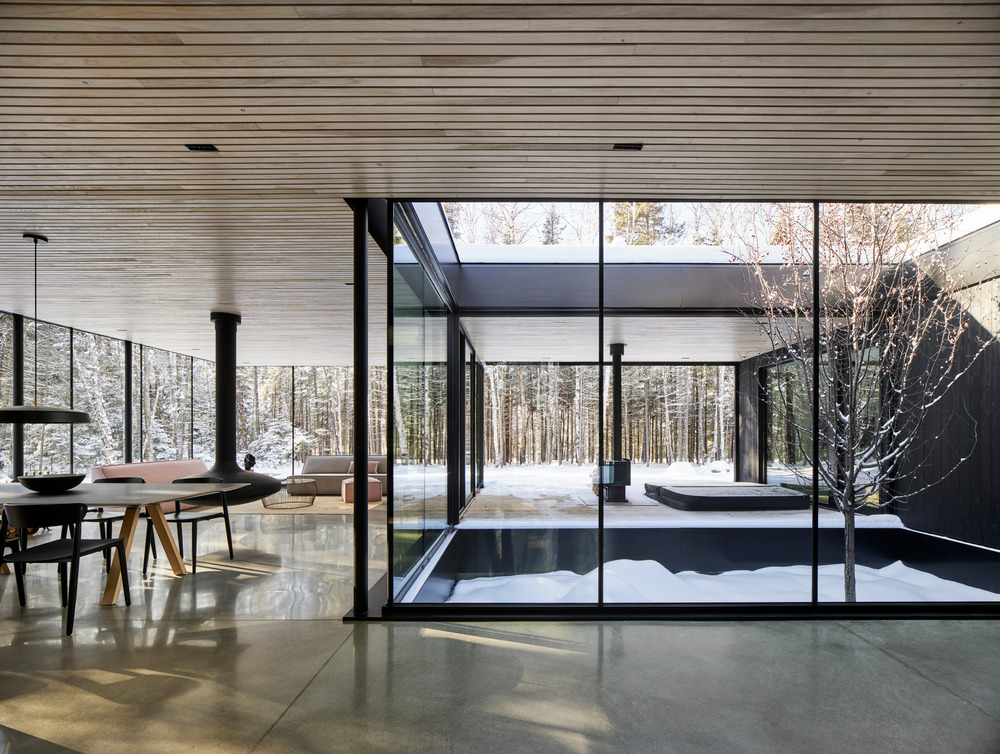




Komentarai (0)